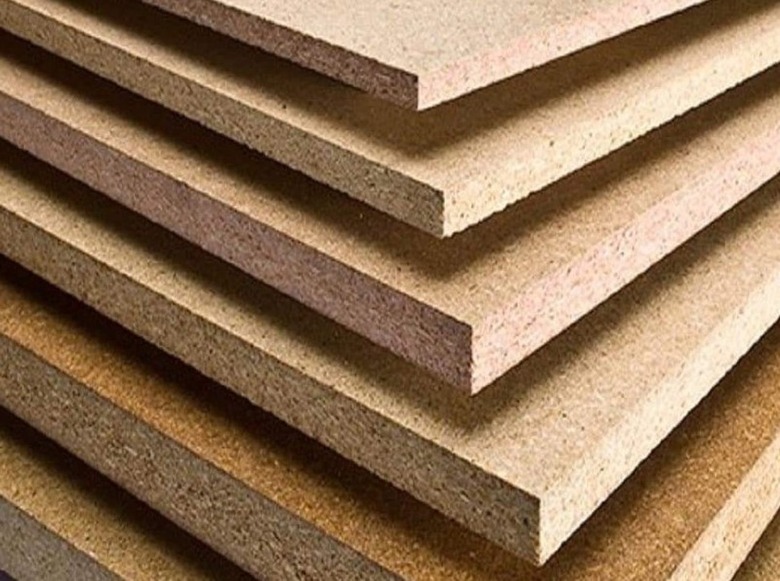How To Cut Particleboard
We may receive a commission on purchases made from links.
Particleboard is a utility material, and you see it most often sandwiched between wood or plastic veneer and built into cabinets, countertops, shelving, and other budget home furnishings. Of all the engineered wood products used in interior construction and cabinetry (others being plywood, oriented strandboard, and medium-density fiberboard), it's the least expensive, least dense, and most fragile.
You can cut particleboard just as you would cut any other type of natural wood or engineered wood product, but the exact procedure and cutting blades depend on the quality of cut you're after. Chip-out can be a real problem, but that might not matter if you're in a hurry and working on a purely functional project, like building concrete forms. If you're building cabinets or shelves, though, you need a clean cut, and your tools and techniques should match your desired outcome. Here's what you need to know about the most effective ways to cut particleboard.
Cutting Particleboard on a Table Saw
Cutting Particleboard on a Table Saw
Particleboard comes in 4-foot-wide sheets of various thicknesses that can be 8 or 10 feet long, so if you intend to rip a sheet on a table saw, you need to provide support for it on the out-feed side. If you don't have a helper to catch it, a sawhorse placed 2 or 3 feet behind the saw will do, but you may have to add a few boards to the top to bring it flush with the saw table. Particleboard is more flexible than plywood, oriented strandboard, or medium-density fiberboard, and if you allow the end to fall lower than the table, the middle can flex upward beyond the reach of the blade.
If you want a clean cut, remember to do two things: Use a blade with at least 80 teeth and cut the sheet with the good side facing up. You can reduce vibrations that cause chipping by installing a zero-clearance throat plate insert on the saw. You can buy one of these, but it's easy to make your own. Just cut a piece of plywood to fit inside the saw throat, screw it in place with the blade lowered, turn on the saw, raise the blade, and allow it to cut through the insert.
Circular Saw Cutting Techniques
Circular Saw Cutting Techniques
If you're cutting particleboard to use for forming concrete, you can just mark a line, grab a circular saw with a utility blade, and let 'er rip. You'll find the going smooth, and while dust may be an issue, particleboard doesn't create as much as medium-density fiberboard. The edges will probably chip, though, so if you want to prevent that, you need to get a different blade and refine your technique.
For one thing, the entire sheet needs to be supported, preferably on 2x4s laid out on their edges. Use a blade with 60 or more teeth (the more the better) and turn the sheet over so you're making the cut from the back. Chip-out tends to occur most often on the side on which you're cutting, so turning over the sheet protects the good side. It doesn't hurt to use a utility knife to score the cut line on the good side before you turn the sheet over and cut with the saw.
Cutting Curves in Particleboard
Cutting Curves in Particleboard
Because particleboard isn't very dense, it's fairly easy to cut curves with a jigsaw, but again, the quality of the blade you use determines the quality of the cut. If you're in a hurry and don't care about quality, a 6 TPI (teeth per inch) blade will get the job done quickly, but if quality is a concern, go with a higher TPI blade. Just don't go too high or the blade will cut too slowly and burn the wood. A 20 TPI blade is the finest you should use. Remember to keep the saw foot in contact with the surface to reduce vibrations.
It isn't practical to cut curves from the back to reduce chipping, so a better strategy for getting a clean edge is to lay masking tape, mark the cut line on the tape, and cut through the tape. Laying tape is also a good idea if you need to drill a large hole with a spade bit or a hole saw.
